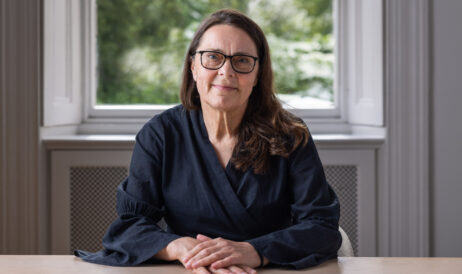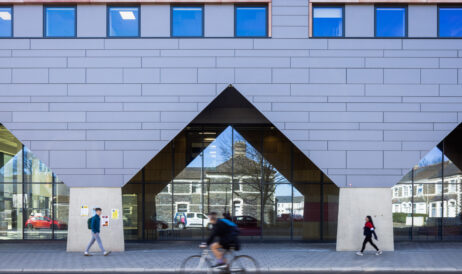Responding to change starts with a strong vision. Considering how pedagogies have evolved, the need to cut carbon emissions, and embracing new ways of working after COVID, we have an opportunity to reimagine university estates. But it’s important to plan these changes carefully, and holistically, to provide targeted investment for buildings and assets that create the best value for institutions.
A whole campus approach
Reorganising, refurbishing, and decluttering an estate can make the university feel more connected and coherent—creating stronger links both within and between campuses. Doing this successfully means considering the entire estate, including external spaces and the public realm that is so important for people’s health and happiness.
With those outdoor spaces comes the opportunity to combat the biodiversity crisis by making campuses richer in plants and wildlife. By maximising nature in playful, people-friendly places, we can support people’s mental and physical health, enhance the feeling of safety and security, and offer a more enjoyable campus environment for students and staff.
Universities are leaders in climate change research, so it’s only natural for these institutions to set an example in reducing carbon and saving energy. Standards like LETI, Passivhaus, and RIBA 2030 should be embraced and developed further, with examples like the University of Exeter pushing new innovations in the Passivhaus standard for laboratory buildings to make them more energy efficient.
Optimising space use through data
Just as we use ice and snow data for climate research, we should track data to make better informed decisions about campus buildings. Quantitative evaluations, including a review of the timetable and actual occupancy levels can help support behaviour change—especially for optimising space use—which is often difficult to justify if only based on qualitative evaluation and sentiment.
Housing different faculties together—like at COMET at the University of South Wales and the Health and Life Sciences Building at the University of Reading—can increase spatial efficiency by around 30% and make the campus feel more alive and connected. Such arrangements will also make everyone feel part of a bigger community and deliver a transformative learning experience for students.
Even simple things like changing the furniture arrangement can go a long way to making spaces more flexible. London Metropolitan University’s Skills and Simulation Centre is a great example of this, where spaces can be used for different activities and, in addition, an immersive observation and recording system allows students to learn by watching procedures and other teaching demonstrations, in real time or on demand.
Make use of what you’ve got
Many universities are now focusing on making their existing assets more energy-efficient, whether that’s through optimising space in conjunction with optimising their timetabling, installing new systems, or retaining existing concrete frames. University of Plymouth’s InterCity Place saved over 1,800 tonnes of embodied carbon—equivalent to running 600 cars annually—by doing just that.
By reducing carbon, and possibly the overall estate size, the money saved on operating costs can be used to enhance existing spaces like the School of Computer Science and Engineering at the University of Westminster, often with recycled materials, new specialist facilities, and making the campus richer in plants and wildlife.
Delivering a successful vision
Universities have an exciting opportunity to re-envision their estates to better serve students, staff, and the environment. The imperative is to plan these changes carefully to avoid wasting money on buildings that might need updating soon. But through using data in a clever way to support decisions, and making use of existing assets, we can deliver transformative campuses that stand as a testament to a healthier, more connected, low carbon future.
Cora Kwiatkowski is attending this year’s AUDE Annual Conference | 15th – 18th April 2024 | Northumbria University. Drop by stand 38 to meet experts from our Universities team or catch Cora speaking on the ‘Sustainability’s Refreshing Impact on Student Performance’ panel in Workshop 4 on Tuesday.







